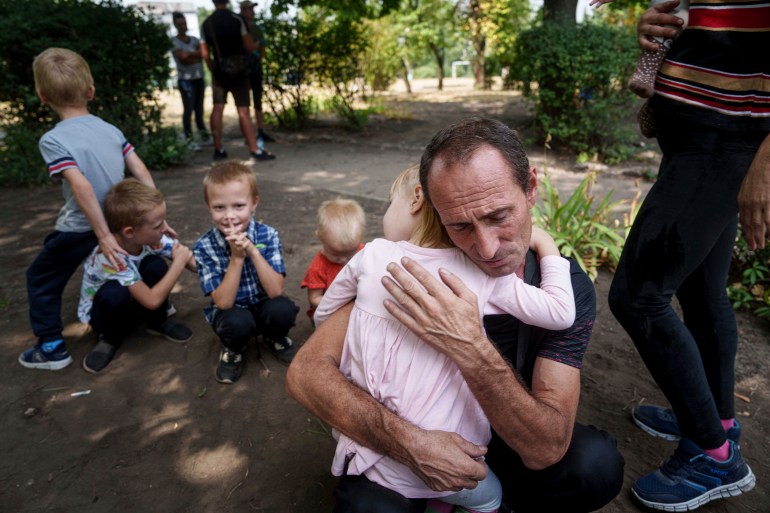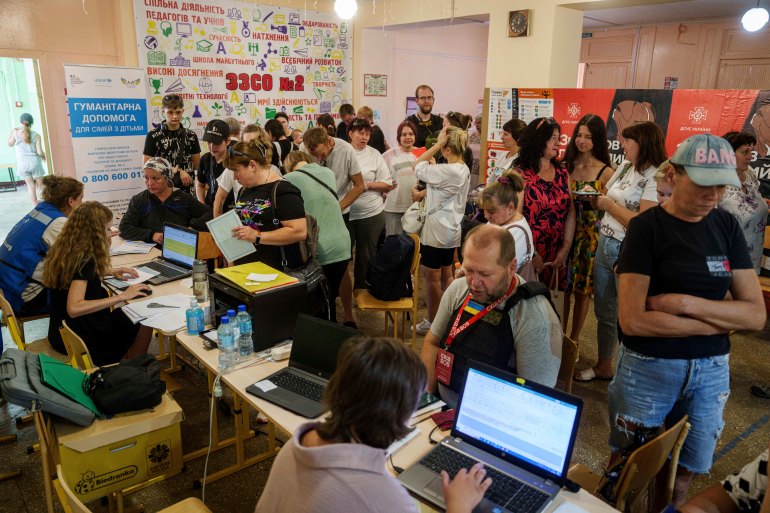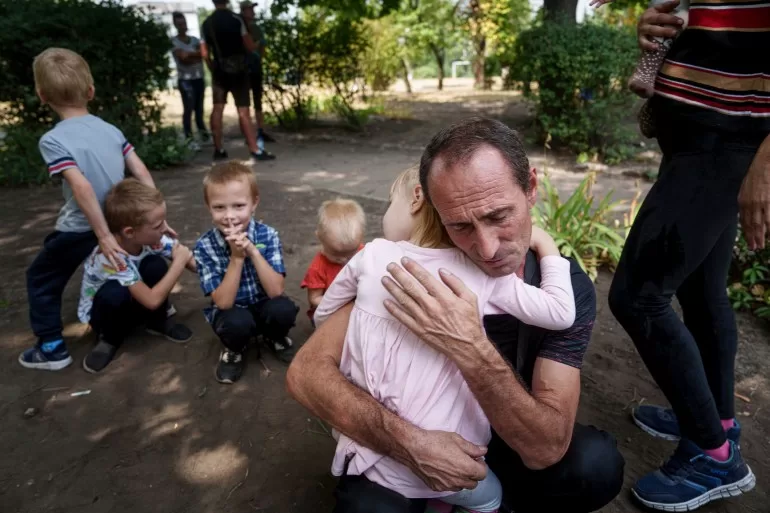Kyiv, Ukraine – Svitlana Menyaylo doesn’t want to hear a word about the success of Ukrainian forces in the western Russian region of Kursk.
Since August 6, Ukrainian soldiers have occupied dozens of Russian villages on more than 1,000 square kilometres (620 square miles) and are digging in to repel an imminent Russian counteroffensive.
But for Menyaylo, a seamstress from the besieged town of Pokrovsk in the eastern Ukrainian region of Donetsk, the very presence of Ukrainian troops in Kursk feels like treason.
Pokrovsk, the administrative centre of a heavily industrialised agglomeration with a pre-war population of almost 400,000, is likely to be taken over by advancing Russian troops soon.
They are less than 10km (6 miles) east of it – and keep inching in every minute after months of heavy bombardment and “meat marches”, frontal attacks on Ukrainian positions that have cost Russian generals tens of thousands of servicemen.
The depopulated town and several highways and railways it straddles have served as a crucial logistical hub for the Ukrainian military, and their takeover may burst the front line open and become a propaganda triumph for the Kremlin.
The government in Kyiv “should have sent those troops [from Kursk] here to repel the orcs”, Menyaylo told Al Jazeera in a telephone interview using a derogatory term for Russian servicemen.
As many in Ukraine cheered the military incursion into Kursk that caught Moscow by surprise, tens of thousands in Donetsk get ready to flee. Meanwhile, Russia’s aerial attacks on other parts of the country continue uninterrupted: at least 51 people were killed in missile strikes on central Ukraine’s Poltava on Tuesday.
“So what with the Kursk region? We’re running out of Donetsk,” Menyaylo said, repeating a tragic meme circulating online in recent days.

‘They live in two realities’
At the time of the interview, the 42-year-old was about to leave her two-bedroom apartment amid the whooshing of Russian shelling and the thuds of heavy gliding bombs that collapsed several buildings nearby.
She said she was packing bags with clothes, documents and mementoes, such as photos of her grandparents who moved to Donetsk from central Ukraine after World War II.
She blames the loss of her home on President Volodymyr Zelenskyy’s government and top brass — some of whom were fired by him on Tuesday in a major reshuffle.
“It’s like they live in two realities, they care about those ephemeral gains instead of defending Ukrainian land here and now,” she said.
Military analysts agree.
“Yes, the two campaigns are developing in parallel realities, and despite a small success in Kursk in the past two weeks, further goals are not quite understandable,” Nikolay Mitrokhin, a researcher with Germany’s Bremen University, told Al Jazeera.
Russia moved only small numbers of troops from the Ukrainian front line to Kursk, augmenting them with barely-trained conscripts and ethnic Chechen servicemen with dubious battlefield experience.
But Kyiv dispatched thousands of servicemen to Kursk, leaving its forces in Donetsk with skeleton crews that cannot contain a “front-line breach”, Mitrokhin said.
The Kremlin boosted its advance on Pokrovsk by deploying troops that had been storming the nearby town of Chasiv Yar, and their breakthrough in Donetsk means they would be able to strike Ukrainian forces in the nearby Zaporizhia region.
Moscow seized three-fourths of Zaporizhia in 2022, and Ukrainian forces liberated tiny areas during their failed counteroffensive last year.
“In the coming two weeks, Ukraine is very likely to lose almost all of its front line in Zaporizhia if it doesn’t deploy all of its reserves from somewhere or doesn’t start a new advance” on Russian territory, Mitrokhin said.

‘Slippery’ slope
But Ukraine seems to have run out of reserves amid more losses in the southern Kherson region.
Most of Kherson has been occupied since 2022, and Kyiv kept trying to regain ground there by seizing small islands in the delta of the Dnipro despite heavy losses.
In recent weeks, Ukrainian troops abandoned most of the islands, and undermanned air defence forces cannot contain Russian drone attacks that “over-terrorised” the regional capital, also named Kherson, Mitrokhin said.
“In general, Ukraine’s positions in August have deteriorated rapidly,” he concluded.
The situation is so bad that some Ukrainian observers simply refuse to comment on it.
“The topic is slippery, I don’t want to breed treason,” one military expert told Al Jazeera.
Meanwhile, Ukrainian officials insist that the impending loss of Pokrovsk will not result in Moscow’s strategic victory as Russia is about to run out of manpower, weapons and ammunition.
“The enemy is now throwing all their forces and means to break through there. And if they’re stopped now, they don’t have large resources to act in other directions,” Roman Kostenko, head of the parliamentary committee on national security, defence and intelligence, said in televised remarks.
Still, the end of summer brought more depressing news for Kyiv.
In July, Ukraine received 10 F-16 fighter jets – and lost one of them last week.
Lawmaker Mariana Bezugla claimed it had been shot down by friendly fire from the Patriot air defence system during a massive Russian drone attack. Officials denied the claim, but Zelenskyy fired air force head Mykola Oleshchuk.
Not all is gloomy on the front line, however, with Ukraine striking Russian airfields, fuel depots, military plants and infrastructure sites in drone attacks.
The largest such attack took place on Saturday night and involved 158 drones that reached 16 western Russian regions, according to the Russian Ministry of Defence.
The drones hit an oil refinery outside Moscow and one of Russia’s largest thermal power plants in the Volga River town of Konakovo more than 800km (500 miles) north of the Ukrainian border.
Russian officials claimed that five Ukrainian drones had been shot down without harming the plant. But witnesses, photos and video evidence suggest that the plant was seriously damaged.
“My whole house was shaking, and the fire spread to half of the sky,” a Konakovo resident told Al Jazeera on condition of anonymity. “And the noise of the fire was so loud that one couldn’t talk.”
